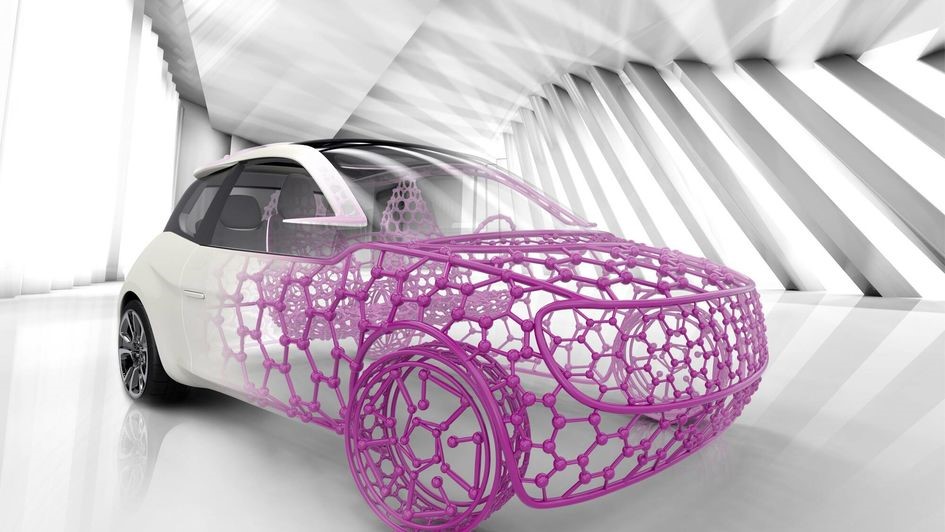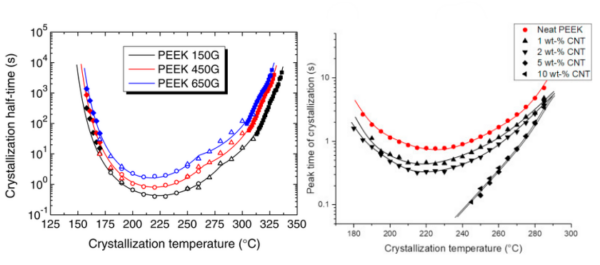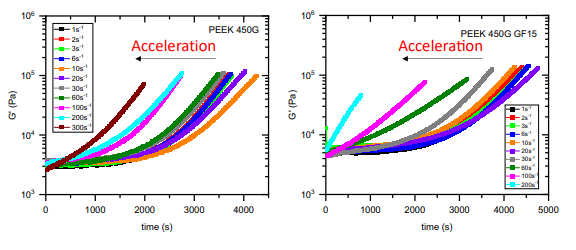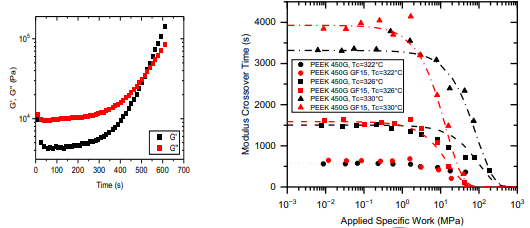Elevating PEEK Composites with Glass Fiber

PEEK glass fiber composite crystallization undergoes a critical transformation when subjected to conditions of high undercooling and intense shear.
PEEK (Polyether ether ketone) is a high-performance thermoplastic known for its excellent mechanical, thermal, and chemical resistance properties. When reinforced with glass fibers, PEEK composites become even stronger and more versatile. Their high-temperature resistance and wear properties make them suitable for the automotive industry. They are utilized for various components such as gears, bearings, bushings, and structural parts.
You can also read: AI-Driven Carbon Fiber
The crystallization process of PEEK glass fiber composites is pivotal. Especially under conditions of high undercooling and intense shear. They ensure product quality and longevity. Researchers and engineers from SKF, and Penn State University, studied this phenomenon.
High Undercooling with PEEK Composites
High undercooling refers to the process where a material is cooled below its equilibrium melting point before solidification. This promotes rapid crystallization and has several advantages. Researchers emphasize that high undercooling conditions are crucial for understanding the crystallization kinetics of PEEK composites. Additionally, they suggest that fast scanning calorimetry (FSC) is key to achieving high undercooling. It enables the tracking of crystallization kinetics across various temperature ranges.
Under high undercooling conditions, the molecular weight significantly influences PEEK crystallization kinetics. Moreover, carbon nanotubes (CNTs) are effective nucleating agents for PEEK crystallization, with their effect saturating at 5 wt% or higher.

Molecular weight significantly influences PEEK crystallization (left). Carbon nanotubes (CNTs) are effective nucleating agents for PEEK crystallization, with their effect saturating at 5 wt% or higher (right). Courtesy of Role of Glass Fiber on the Flow-Induced Crystallization of Poly(ether ether ketone). ANTEC 2024
Accelerated Crystallization in PEEK Glass Fiber Composites
Shear accelerates crystallization of PEEK glass fiber composites. It induces an isotropic to nematic transition in the molten state of PEEK. This transition is observed through rheo-optical methods such as shear-induced polarized light imaging (SIPLI).
Both neat PEEK and PEEK composites with glass fiber reinforcement exhibit accelerated crystallization under varying shear conditions. However, the crystallization of PEEK reinforced is faster.

PEEK glass fiber composites (G’’) are notably more responsive to flow-induced acceleration.Courtesy of Role of Glass Fiber on the Flow-Induced Crystallization of Poly(ether ether ketone). ANTEC 2024
Under nearly quiescent crystallization conditions, PEEK glass fiber (GF) composites exhibit slower crystallization kinetics compared to neat PEEK. However, it highlights that PEEK glass fiber composites are notably more responsive to flow-induced acceleration. This implies that while the presence of glass fibers initially hinders crystallization under quiescent conditions, their inclusion enhances the material’s responsiveness to flow-induced crystallization. It leads to accelerated crystallization kinetics under shear flow. This phenomenon is attributed to the role of glass fibers as a form of confinement. It restricts the relaxation of the polymer chains.

PEEK GF composites (G’’) are notably more responsive to flow-induced acceleration. Courtesy of Role of Glass Fiber on the Flow-Induced Crystallization of Poly(ether ether ketone). ANTEC 2024
Optimizing Flow-Induced Crystallization of PEEK
Overall, the role of GF in the flow-induced crystallization of PEEK composites is crucial for understanding and optimizing the material’s properties. They undergo a critical transformation when subjected to conditions of high undercooling and intense shear. These conditions not only promote rapid crystallization but also enhance the mechanical strength, thermal stability of the material.
By carefully controlling the crystallization process under high undercooling and intense shear, manufacturers can ensure the production of PEEK glass fiber composites with superior quality and extended longevity. This collaborative research effort involves experts from SKF and Penn State University. It sheds light on the intricate mechanisms underlying PEEK composite crystallization. This paves the way for the development of advanced materials for diverse industrial applications.
